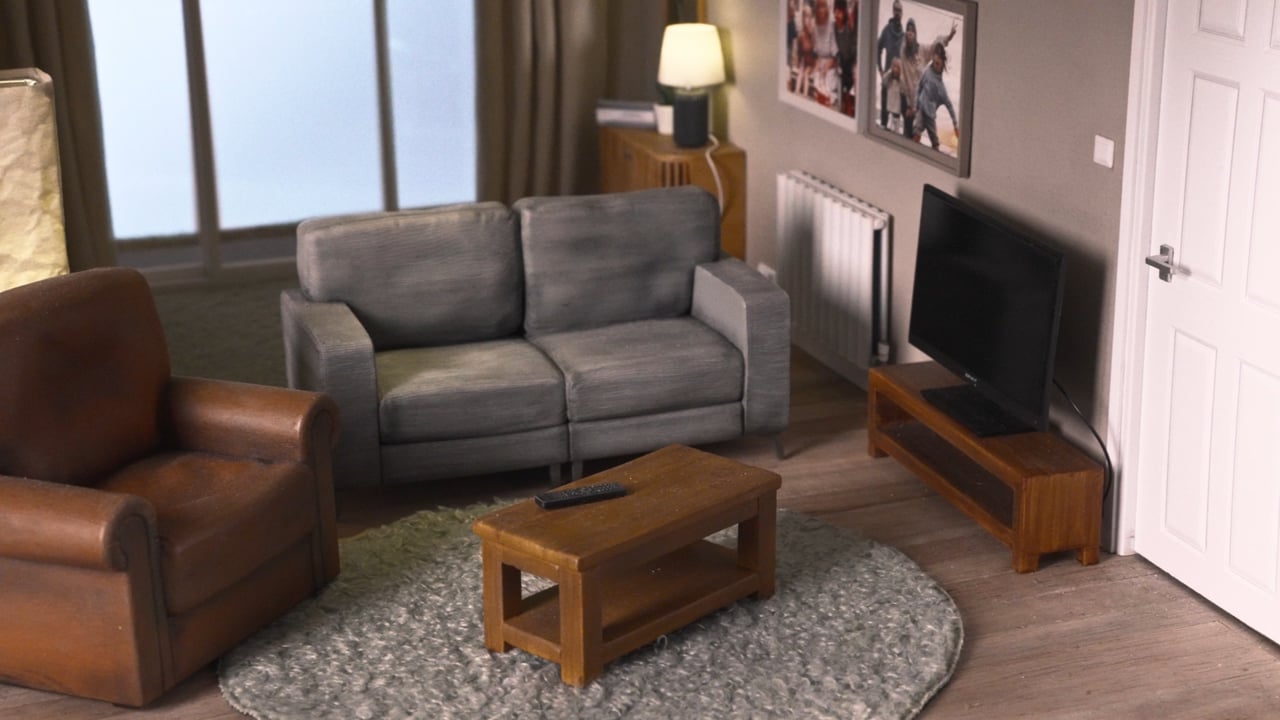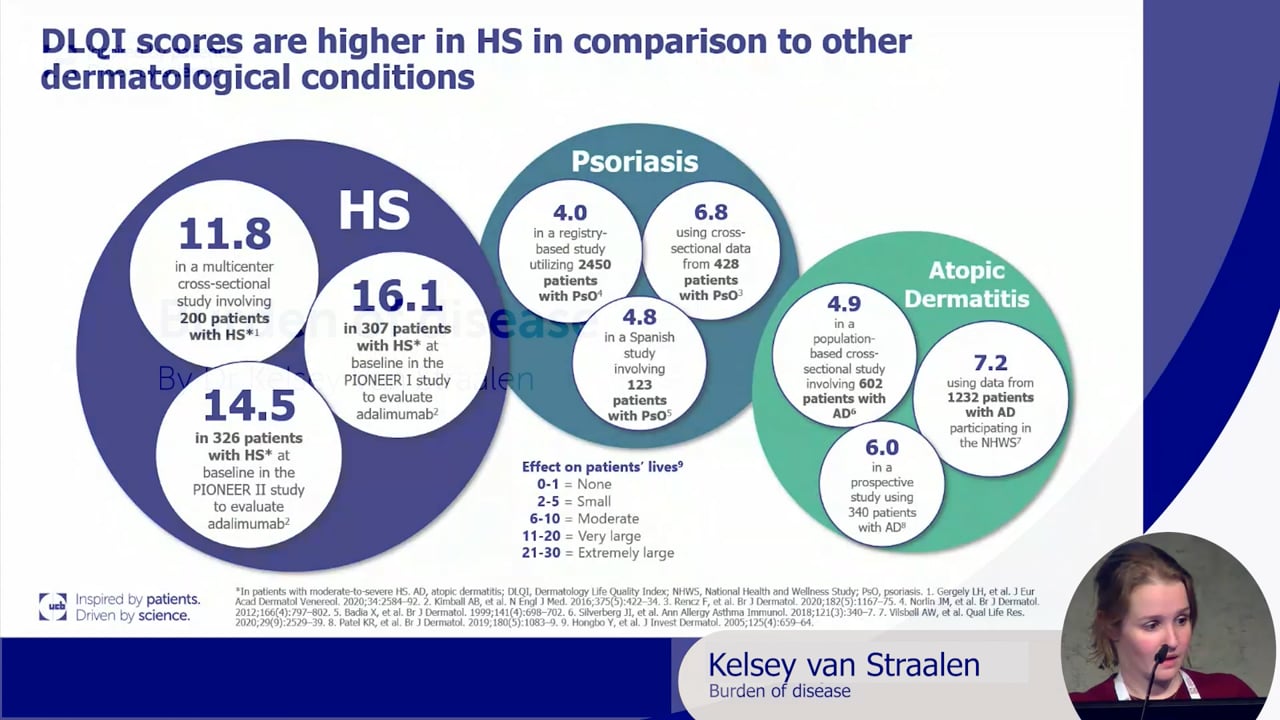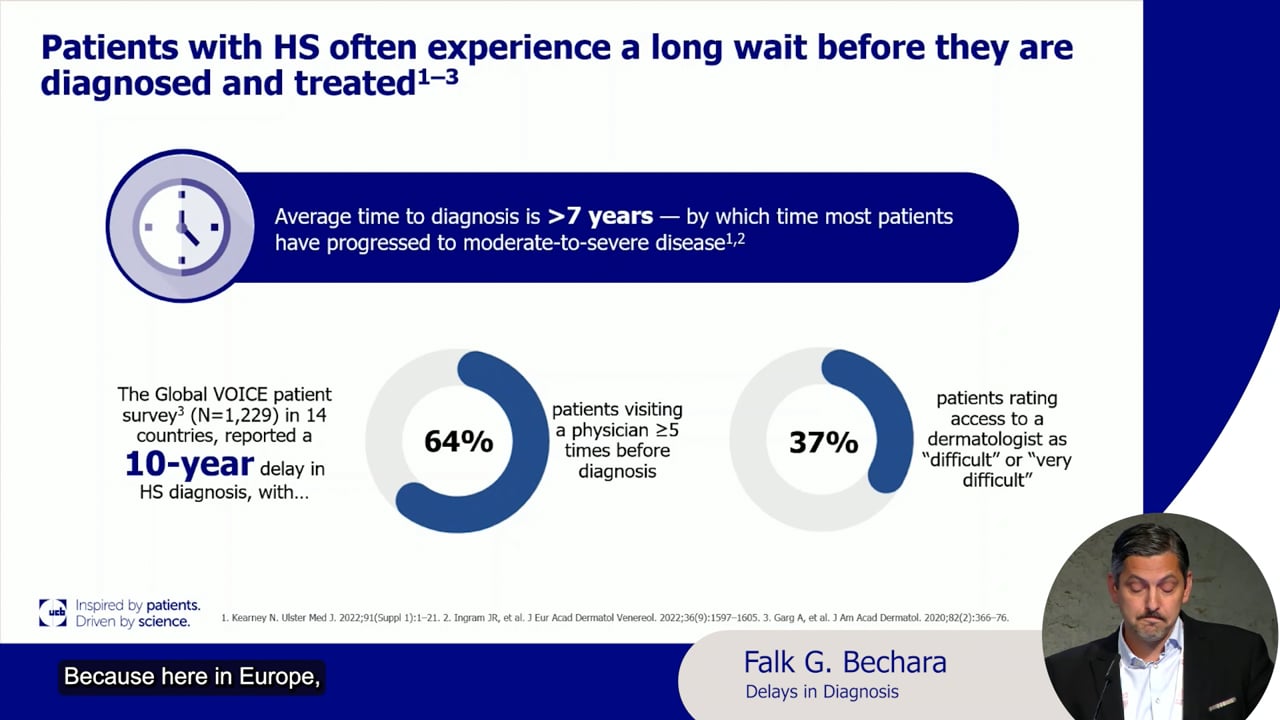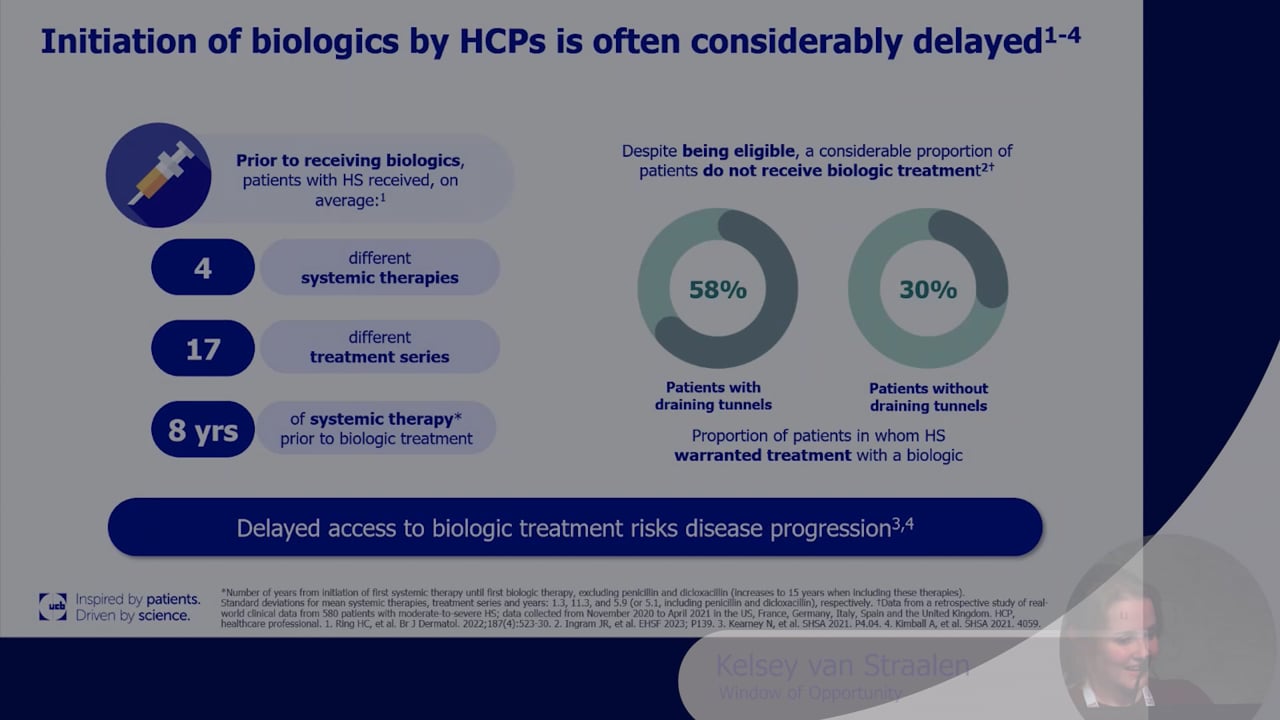
Do you know how HS impacts your patients?
Take a closer look at the pain and suffering caused by HS in the Unbearable Home: a normal looking house from the outside, but a prison of pain and suffering inside.
The Unbearable Home has been co-created with people living with HS. It provides real insights into their daily life and demonstrates how even the smallest of tasks can be a huge challenge when living with HS.
Walk through their home to realise what it is like to have your home comforts stripped away; from relaxing on your favourite chair, getting a good night’s sleep, or enjoying a refreshing shower.
Can we let this continue?
The challenges faced by patients with HS:

Interpersonal impact
“What happens is the pain increases and then you get to the point where it’s the most unbearable thing you could imagine”1
Comorbidities can compound the burden of HS6
Chronic inflammation, as well as the risk factors for HS, can predispose patients to multiple systemic comorbidities.7,8 These include inflammatory bowel disease, metabolic syndrome, hypertension and a small increased risk of some cancers.8,9
Comorbidities must be identified early and treated appropriately to avoid adding a significant burden to patients and society.8 This means that multidisciplinary care in HS is vital.6,8
Can we let this continue?
The physical symptoms of HS can be managed with pharmaceutical treatments and surgery if necessary. Some patients may also benefit from lifestyle changes to ease their symptoms.10
The management of HS for your patients should be individualised, and based on the subjective impact and severity (Hurley stage) of the disease.11
Our campaign
Working together with people from around the world who are living with HS, UCB has developed a series of striking images and videos that paint a picture of what can be hard to put into words: the reality of life with HS.
From sitting down to taking a shower, these eye-catching materials help visualise what it’s like to live with the physical discomfort and pain that HS brings, every day.

The chair
Because for patients with HS, sitting down can feel like a thousand needles piercing them.
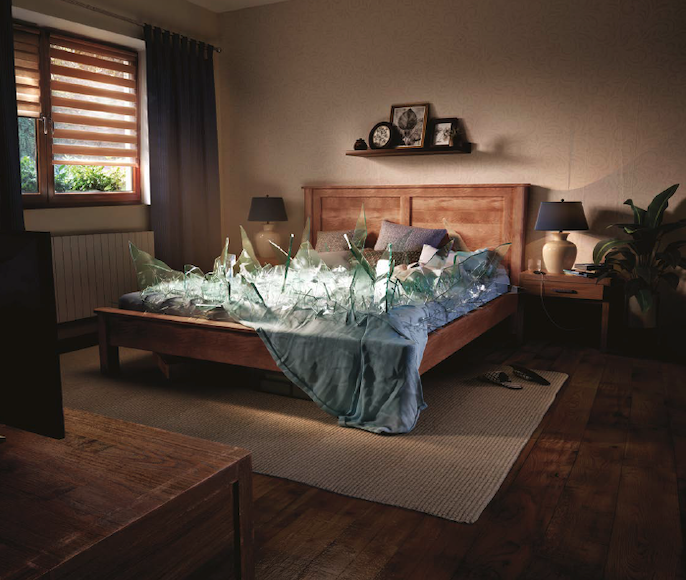
The bed
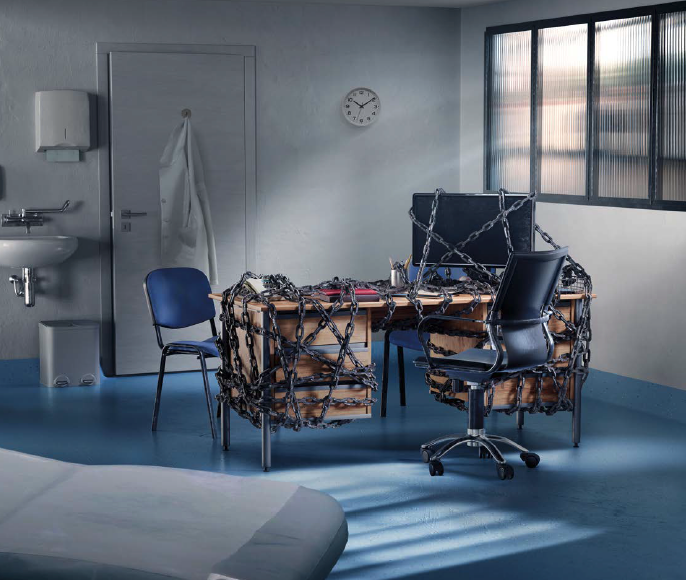
The desk
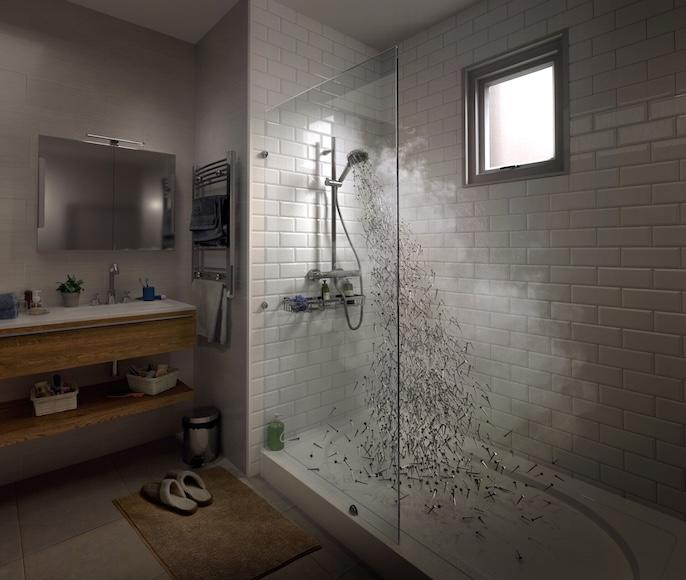
The shower
Find out more about our commitment to improving HS care

Under the Skin
HS affects all aspects of a patient’s life. Listen to the latest episode of ‘Under the Skin’ , and find out more about what you can do to alleviate this burden
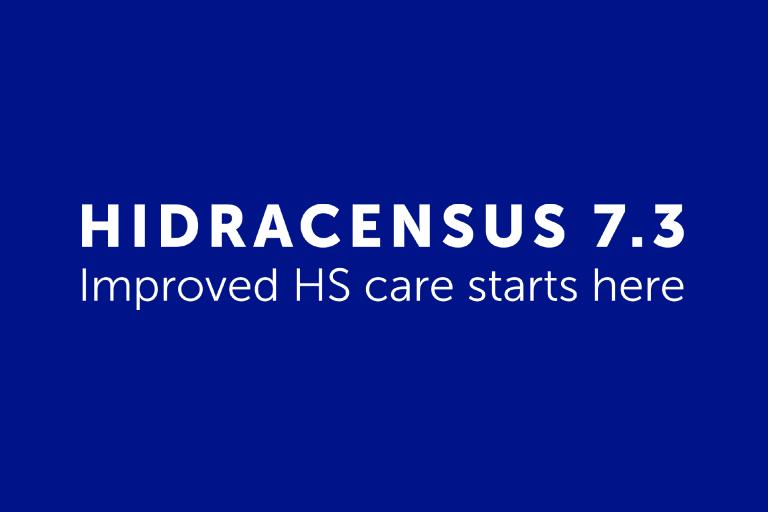
HIDRACENSUS 7.3
Learn more about our ongoing expert-led initiative that aims to enhance the standard of care for patients living with HS across Europe
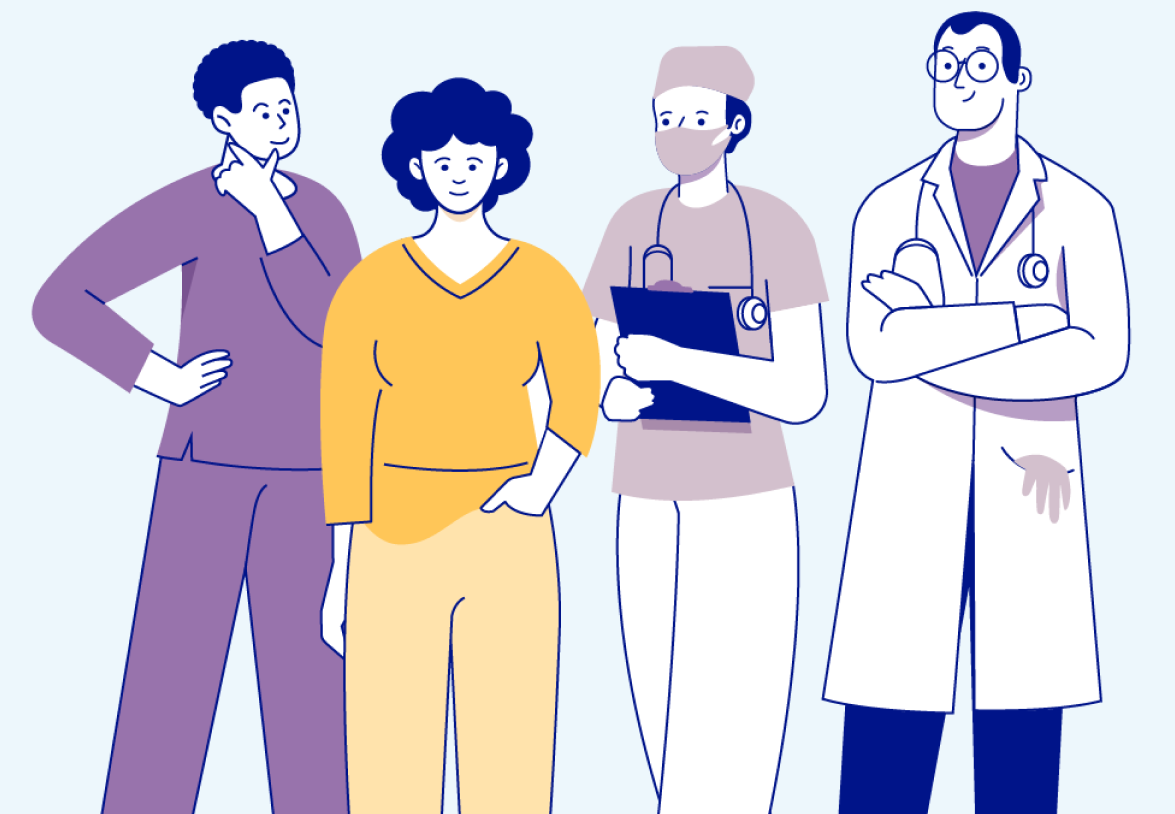
HS Learning Hub
From bench to bedside, follow the story of HS through our educational curriculum

HS Resources
Access a range of practical and educational resources (for both you and your patients) that aim to help you optimise the management of HS
References
- Howells L, et al. Br J Dermatol. 2021;185:921–34.
- Huang CM, Kirchhof MG. J Cutan Med Surg. 2021;25:591–7.
- Thorlacius L, et al. J Invest Dermatol. 2018;138:52–7.
- Goldburg SR, et al. J Am Acad Dermatol. 2020;82:1045–58.
- Gisondi P, et al. J Eur Acad Dermatol Venereol. 2023;37(Suppl 7):6–14.
- Chiricozzi A, et al. J Eur Acad Dermatol Venereol. 2019:33(Suppl 6):15–20.
- Touhouche AT, et al. Int J Womens Dermatol. 2020;6:164–8.
- Tzellos T, Zouboulis CC. Exp Dermatol. 2022;31(Suppl 1):29–32.
- Nguyen TV, et al. J Eur Acad Dermatol Venereol. 2021;35:50–61.
- Sayed CJ, et al. Obstet Gynecol. 2021;137:731–46.
- Zouboulis CC, et al. J Eur Acad Dermatol Venereol. 2015;29:619–44.
- Hidradenitis Suppurativa Foundation. HS causes. https://www.hs-foundation.org/hs-causes. Accessed June 2024.
- Barmatz S, et al. Dermatology. 2022;238:772–84.
EU-DA-2300369
Date of preparation: June 2024

